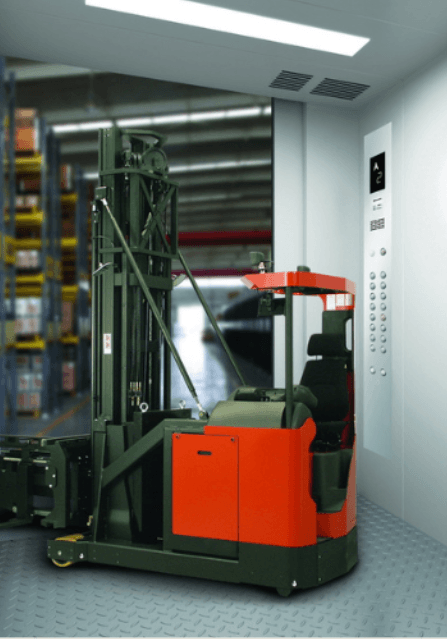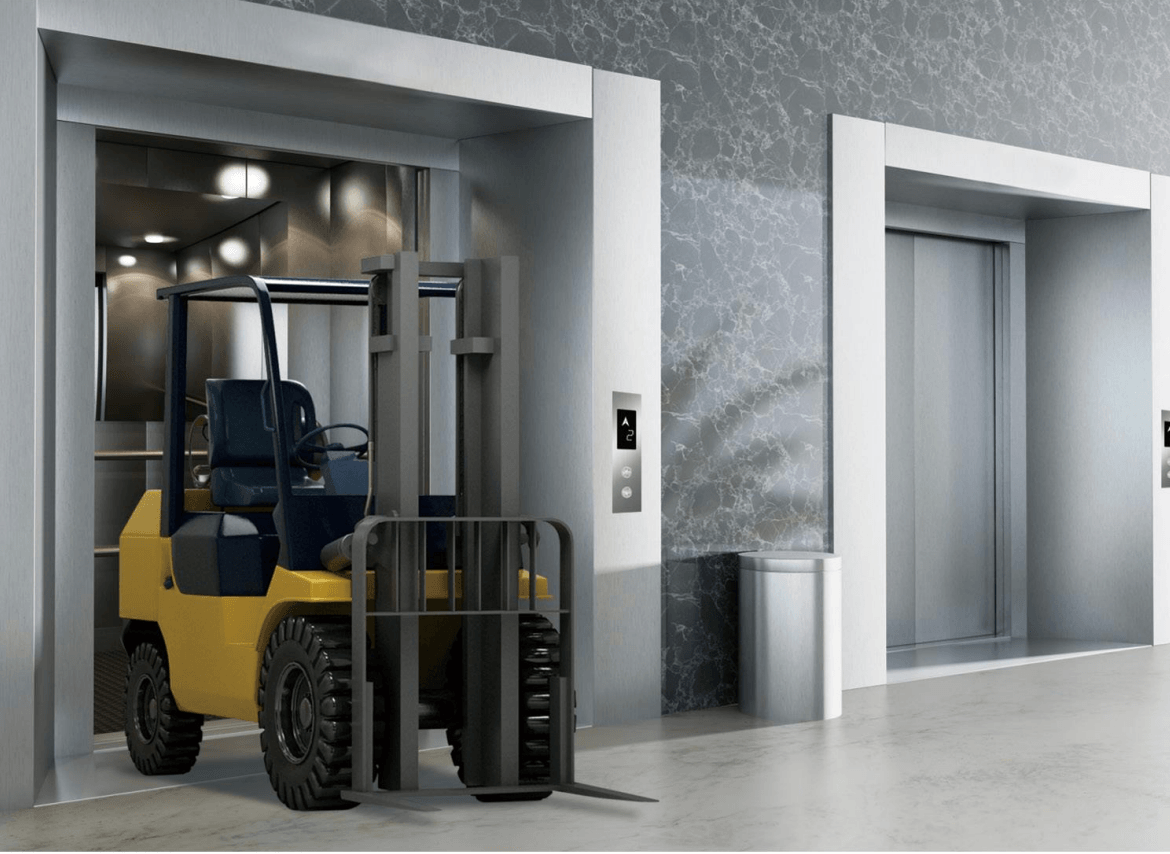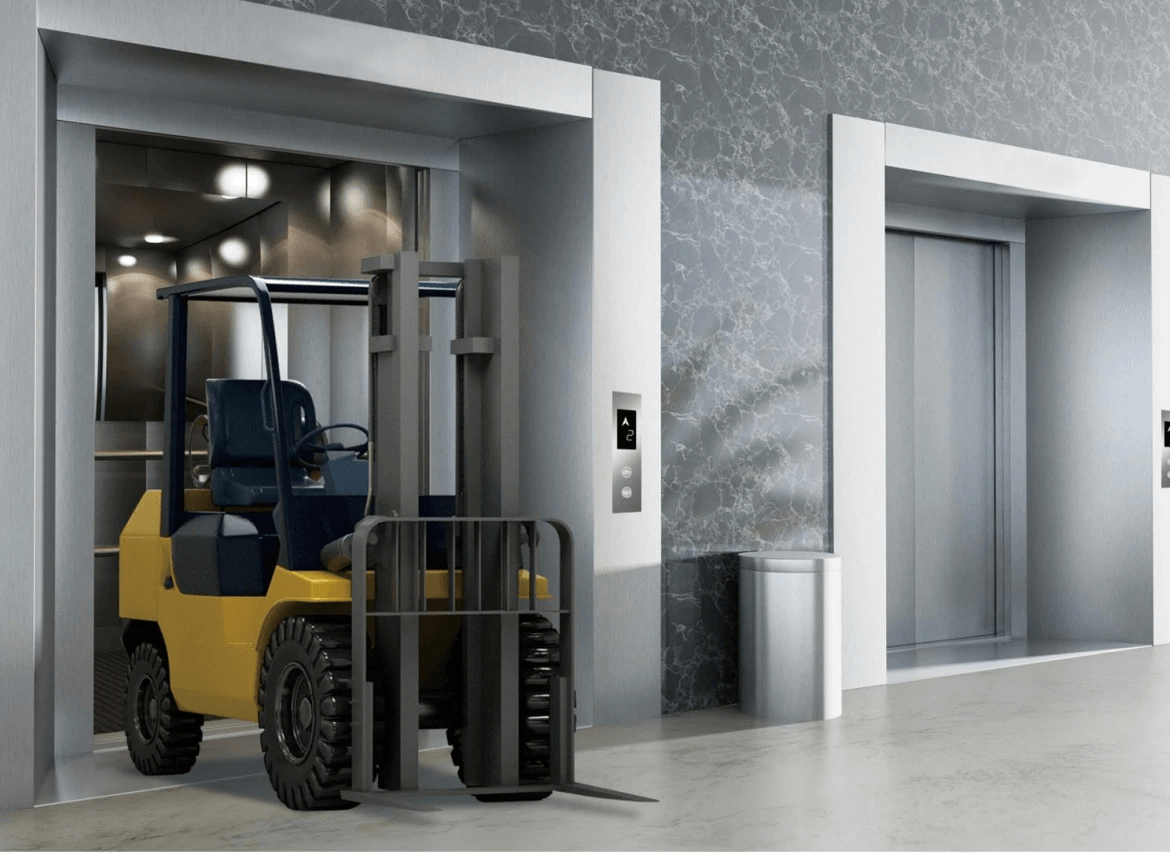Introduction

Understanding Service Elevators
Service elevators are designed primarily for transporting personnel along with goods, making them a versatile choice for many building types. Often found in hotels, restaurants, and office complexes, these elevators facilitate smooth operations by allowing staff to move equipment without disrupting guests or customers. With features tailored for both passenger comfort and cargo efficiency, service elevators can handle everything from luggage to maintenance supplies seamlessly.
The Role of Freight Elevators
Freight elevators stand out as heavy-duty workhorses specifically engineered for transporting substantial loads within commercial and industrial spaces. Unlike their service counterparts, these elevators prioritize capacity over comfort and are often equipped with robust safety features suited for moving large items like pallets or machinery. Their role is critical in warehouses, factories, and retail environments where efficient elevator cargo transport can significantly enhance productivity.
Key Differences Explained
Understanding the key differences between service elevator vs freight elevator is crucial for making informed decisions about your building's needs. While both types of lifts serve essential functions, they differ significantly in design specifications and intended usage scenarios; service elevators prioritize versatility while freight elevators focus on strength and durability. By examining these distinctions closely, property managers can ensure they select the right type of elevator that aligns with their operational requirements.
What is a Service Elevator?

Purpose and Functionality
The primary purpose of a service elevator is to facilitate the movement of people and cargo within commercial or residential buildings without disrupting regular foot traffic. Unlike standard passenger elevators, these lifts are designed with larger dimensions, allowing for easy transport of bulky items like furniture or equipment. This functionality makes them indispensable in settings such as hotels, hospitals, and office complexes where quick access is crucial.
Common Uses in Various Buildings
Service elevators find their niche across diverse environments—from bustling hotels that require quick room service deliveries to hospitals needing efficient transport for medical supplies and equipment. In commercial spaces like shopping malls or office buildings, they enable staff to move goods seamlessly without interfering with customers using regular elevators. Additionally, residential buildings often incorporate service elevators for moving heavy items like groceries or furniture between floors.
Benefits of Choosing a Service Elevator
Opting for a service elevator offers numerous advantages that can enhance building operations significantly. Firstly, they provide dedicated transportation for cargo without interrupting passenger flow—this means no awkward encounters when someone is trying to haul an oversized item up ten flights! Additionally, many elevator companies offer customizable options tailored to specific building needs, ensuring that you get the most efficient solution possible for your unique requirements.
Exploring Freight Elevators

Freight elevators are specialized lifts designed to transport goods and heavy materials within buildings. Unlike service elevators, which cater to both passengers and cargo, freight elevators focus solely on moving items efficiently and safely. Understanding how these elevators operate is crucial for businesses that rely on them for daily operations.
How Freight Elevators Operate
Freight elevators are engineered with robust mechanisms to handle heavy loads, often featuring wider doors and larger cabins compared to service elevators. The operation of a freight elevator typically involves a hydraulic or traction system that ensures smooth vertical travel, even under significant weight. These mechanisms are vital for minimizing wear and tear, as they frequently carry elevator cargo like pallets, machinery, or large shipments.
Additionally, many freight elevators come equipped with safety features such as overload sensors and automatic leveling systems to ensure safe loading and unloading. Elevator companies often customize these lifts based on the specific needs of a building or business, ensuring optimal performance in various environments. As businesses evaluate their options in the service elevator vs freight elevator debate, understanding operational mechanics can significantly influence their decision.
Typical Applications for Freight Elevators
Freight elevators find their niche in various settings where heavy lifting is essential—think warehouses, factories, retail stores, and multi-story commercial buildings. They are particularly useful in environments where large quantities of goods need to be moved quickly between floors without disrupting passenger traffic. In residential settings too, a cargo lift elevator can be invaluable for transporting bulky items or groceries from ground level to upper floors.
These elevators also play a critical role in logistics centers where timely delivery of products is key to maintaining efficiency. Whether it's moving furniture into a new apartment building or transporting industrial equipment across multiple levels of a manufacturing plant, freight elevators streamline operations while ensuring safety compliance with industry standards. Thus, they serve as an indispensable tool in modern architecture.
Advantages of Using a Freight Elevator
One of the primary advantages of using a freight elevator is its ability to handle substantial weight capacities that standard service elevators may not accommodate effectively. This makes them ideal for moving large volumes of inventory or equipment without risking damage or injury—a crucial consideration for any business reliant on efficient logistics. Additionally, the design features tailored specifically for cargo handling reduce the likelihood of operational delays caused by overcrowding.
Another benefit lies in their durability; built with sturdier materials than typical passenger lifts, freight elevators can withstand the rigors associated with frequent use in demanding environments such as construction sites or distribution centers. Moreover, reducing wear on passenger vehicles by reserving freight elevators solely for cargo helps maintain overall elevator service quality throughout the building—a win-win situation! So when weighing options between service elevator vs freight elevator choices, it’s clear that each has unique advantages tailored to different needs.
Cost Considerations

Comparing Installation Costs
The installation costs for service elevators vs freight elevators can differ quite a bit due to their design and intended use. Service elevators are typically designed for lighter loads and may require less structural reinforcement compared to freight elevators, which are built to handle heavy cargo loads. This means that while you might save on initial expenses with a service elevator, it's essential to consider your building's specific demands when making your choice.
Elevator companies often provide detailed quotes based on various factors such as size, weight capacity, and additional features. For instance, if you’re looking at a residential lift versus an industrial cargo lift elevator, the price can swing dramatically based on these specifications. Thus, comparing quotes from different elevator companies will give you a clearer picture of potential costs before committing.
Maintenance Expenses for Each Type
Maintenance is another critical factor when comparing service elevators vs freight elevators; after all, what goes up must be kept running smoothly! Service elevators generally have lower maintenance costs primarily due to their simpler mechanics designed for lighter usage scenarios. On the other hand, freight elevators may incur higher expenses because they experience more wear and tear from transporting heavy items consistently.
Regular inspections are vital for both types of elevators as part of compliance with safety regulations set by industry standards. The cost associated with routine maintenance should also be factored into your overall budget; neglecting this could lead to hefty repair bills down the line! Ultimately, understanding these ongoing expenses will help in assessing long-term financial implications when choosing between an elevator cargo system.
Long-term Value of Service vs Freight Elevators
When evaluating long-term value in relation to service elevator vs freight elevator options, one must consider both functionality and return on investment (ROI). While upfront costs might be lower for service elevators in some cases, if your building frequently requires heavy lifting capabilities or specialized transport needs like those offered by a cargo lift elevator, investing in a freight option could prove more beneficial over time.
Moreover, it’s essential to think about how each type contributes to operational efficiency within your facility or residential space. An efficient elevator service not only enhances productivity but also elevates user satisfaction—literally! Therefore, weighing initial investments against potential long-term benefits is key in determining which option aligns best with your specific requirements.
Industry Standards and Regulations

Safety Requirements for Elevators
Safety is paramount in the world of elevators, whether you're discussing a service elevator or a freight elevator. Each type must meet specific safety requirements that include load limits, emergency protocols, and regular inspections. Elevator companies are tasked with ensuring that their installations adhere to these standards to prevent accidents and ensure smooth operations.
In residential settings, safety features become even more critical as they often cater to families and vulnerable populations. Regular maintenance checks are essential for both service elevators used for transporting goods and passengers, as well as freight elevators handling heavy cargo. Following these safety requirements not only protects users but also builds trust in elevator services.
Codes Impacting Service and Freight Elevators
Various codes impact how service elevators and freight elevators function within buildings. The most notable among them are the American Society of Mechanical Engineers (ASME) A17.1 code for safety codes for elevators and escalators, which dictates design specifications and operational procedures. Understanding these codes helps building owners make informed decisions about which type of elevator best suits their needs.
For instance, while a residential lift may follow different guidelines than a commercial cargo lift elevator intended for industrial use, compliance remains essential across all applications. These codes also evolve over time to incorporate new technologies and address emerging safety concerns within the industry. Thus, staying abreast of changes ensures that your chosen elevator—be it a service or freight model—meets current standards.
Importance of Compliance with Elevator Companies
Compliance with regulations set forth by elevator companies is non-negotiable if you want to avoid costly fines or operational issues down the line. This compliance ensures that both service elevators designed for passenger transport and freight elevators meant for heavy loads operate smoothly without risking user safety or structural integrity. Moreover, working closely with reputable elevator companies guarantees adherence to local laws while providing peace of mind regarding your investment.
Elevator companies often provide ongoing support through maintenance contracts that help keep your equipment in top shape while adhering to regulatory demands over time. In this competitive market where choices abound between various types like cargo lift elevators or dedicated service lifts, compliance can be a distinguishing factor when selecting an installer or provider. Ultimately, investing in compliant systems enhances not just functionality but also elevates overall user experience.
Elevator Technology: Innovations and Features

In today’s fast-paced world, technology is revolutionizing the way we think about elevators, particularly service elevators and freight elevators. As elevator companies innovate, they are introducing features that enhance functionality, safety, and user experience. Understanding these advancements can help you make informed decisions when considering a service elevator vs freight elevator for your building.
High-Tech Options for Service Elevators
Service elevators have come a long way from their basic origins, now incorporating smart technology that improves efficiency and accessibility. For instance, modern service elevators often feature touchless controls and smartphone integration, allowing users to call the elevator without physical contact—ideal for maintaining hygiene in commercial settings. Additionally, advanced sensors can optimize travel routes based on demand, reducing wait times and energy consumption.
Another exciting innovation is the use of AI-driven systems that learn usage patterns over time. By analyzing peak hours and user behavior, these systems can adjust operations accordingly—making your service elevator more responsive to the needs of residents or employees alike. With these high-tech options available in service elevators, it’s clear that they are not just functional but also contribute to a smarter building ecosystem.
Tech Advancements in Freight Elevators
Freight elevators are also experiencing technological upgrades that improve their performance and safety features significantly. Many new models come equipped with load sensors that monitor weight capacity in real-time to prevent overloads—a crucial aspect when transporting heavy cargo or equipment via an elevator cargo system. This not only enhances safety but also prolongs the lifespan of the lift by preventing undue stress on mechanical components.
Moreover, some freight elevators now include automated loading docks with hydraulic lifts to streamline loading processes for businesses like warehouses or factories. These innovations minimize manual labor while maximizing efficiency—a win-win scenario for both operational productivity and employee safety. With such advancements in freight elevator technology, businesses can transport goods more effectively than ever before.
Case Study: Schmidt's Freight Elevator Features
To illustrate the impact of modern technology on freight elevators, let’s take a closer look at Schmidt's latest model—known as the Schmidt Cargo Lift. This cutting-edge freight elevator boasts several innovative features tailored to meet diverse industrial needs while ensuring compliance with industry regulations set by leading elevator companies.
The Schmidt Cargo Lift incorporates a state-of-the-art control system that allows operators to schedule maintenance automatically based on usage analytics—reducing downtime significantly compared to traditional models. Additionally, its robust design accommodates oversized cargo while maintaining energy efficiency through regenerative drives that harness energy during descent.
Overall, Schmidt's commitment to integrating advanced technology into their freight elevators exemplifies how innovation can elevate operational standards across various industries while addressing common challenges faced by businesses today.
Conclusion

In the grand showdown of service elevator vs freight elevator, understanding the nuances of each type is crucial for making an informed choice. While both serve specific functions, they cater to different needs within a building's operational framework. By weighing their benefits, applications, and costs, you can determine which elevator service aligns best with your requirements.
Making Your Choice: Key Takeaways
Service elevators are designed for transporting passengers and light cargo in commercial or residential settings, while freight elevators are built to handle heavy loads like bulk goods or equipment. Elevator companies often provide tailored solutions that highlight these differences, ensuring that your choice enhances operational efficiency and safety.
Evaluating Your Building's Needs
Assessing your building's specific requirements is vital when deciding on either a service elevator or a freight elevator. Think about the volume of cargo you need to transport regularly; if it's substantial and heavy-duty, a freight elevator might be your best bet. On the other hand, if you're looking for versatility in handling both passengers and lighter goods, then investing in a service elevator could be more beneficial.
Future Trends in Elevator Service and Freight Options
The landscape of elevators is evolving rapidly with advancements in technology paving the way for smarter solutions. Innovations such as energy-efficient systems and IoT connectivity are becoming standard features in both service elevators and freight elevators alike—making them not just functional but also eco-friendly choices for modern buildings. As trends shift towards sustainability and efficiency, expect to see even more specialized options emerging from leading elevator companies that cater to diverse needs across various sectors.

